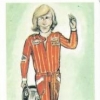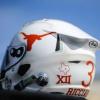An increased call for additional safety for drivers in F1 has been made after Justin Wilson’s death.
What seems to have been overlooked is that while still tragic, Justin Wilson was driving in an inherently more dangerous formula.
If you look at the number of driver deaths in Indycar vs. F1 over the last 33 odd years or so (the modern era of cars); A driver is twice as likely to die racing in Indycar, than racing in F1.
Mostly due to the high speed oval racing (80% of Indycar deaths occurred whilst racing on ovals.)
These are just the deaths that happened during Races & Quali:
Gordon Smiley[96] 15-May-82 USAC Indianapolis Motor Speedway Indianapolis 500
Jim Hickman 31-Jul-82 CART Milwaukee Mile Provimi Veal Tony Bettenhausen 200
Jovy Marcelo 15-May-92 USAC Indianapolis Motor Speedway Indianapolis 500
Scott Brayton 17-May-96 USAC Indianapolis Motor Speedway Indianapolis 500
Jeff Krosnoff[ 14-Jul-96 CART Toronto street circuit Molson Indy Toronto
Gonzalo Rodríguez 11-Sep-99 CART Mazda Raceway Laguna Seca Honda Grand Prix of Monterey
Greg Moore 31-Oct-99 CART Auto Club Speedway Marlboro 500
Paul Dana 26-Mar-06 IndyCar Homestead-Miami Speedway Toyota Indy 300
Dan Wheldon 16-Oct-11 IndyCar Las Vegas Motor Speedway IZOD IndyCar World Championship
Justin Wilson 23-Aug-15 IndyCar Pocono Raceway ABC Supply 500
33yrs 10 Deaths Avg: 1 death every 3.3 years
F1 DEATHS
Gilles Villeneuve 8-May-82 F1 Circuit Zolder 1982 Belgian Grand Prix
Riccardo Paletti 13-Jun-82 F1 Circuit Gilles Villeneuve 1982 Canadian Grand Prix
Roland Ratzenberger 30-Apr-94 F1 Autodromo Enzo e Dino Ferrari 1994 San Marino Grand Prix
Ayrton Senna 1-May-94 F1 Autodromo Enzo e Dino Ferrari 1994 San Marino Grand Prix
Jules Bianchi 5-Oct-14 F1 Suzuka Circuit 2014 Japanese Grand Prix
33yrs 5 Deaths Avg: 1 death every 6.6 years
To repeat:
Open wheel drivers were twice as likely to die racing in Indycar as opposed to racing in F1.
And if you had a fatal incident in Indycar there was an 80% chance it would be on an oval.
But, some might say…
"You attempt to blame oval track racing for fatalities that could have occurred on many high-speed tracks..
Especially since 7 out of the 15 combined fatalities you listed occurred on road courses!"
You want to combine both series, ok then. Let’s see what the trend is:
From 1982 to 2015 Indycar and F1 ran a combined 1289 races. (Including all CART, Champcar, and IRL races.)
1289 Total; Indycar & F1.
942 Road/Street - 73% of all races run
347 Ovals. - 27% of all races run
So 7 of the 15 fatalities, or 47% of total deaths, occurred on Road Courses which make up 73% of all the races.
The remaining 8 fatalities, or 53% of total deaths, occurred on Ovals which make up only 27% of all races run.
Over half of the fatalities occurred on Ovals which make up less than a third of the combined race schedule.
If the deaths "could have occurred on many high-speed tracks", then we would see a much more even split between Oval and road courses.
Oval racing presents a significant and measureable added risk, than if open-wheel / open-cockpit cars ran only on road/street courses.
Just for reference, Le Mans has had four deaths in the last 33 years.
But comparing different series is difficult as it is hard to quantify those types of 'apples to oranges' comparisons.
If fact when comparing F1 to Indycar there are other differences between the two series, that one could make the case that everything I have written above is also an 'apples to oranges' comparison.
But I thinks it is still useful as a frame of reference.
I am very far from a proper statistics guy. In fact I would hope that someone better in statistics and probabilities than me would take a look at things like this and give racing fans some factual talking points when it comes to safety.
It would be nice if the FIA could do a statistical study encompassing all levels of motorsport and especially the F1 ladder to give us a more solid idea of the real safety trends over the last several decades.
Personally, I find it rather odd that no one has done it yet.
.
Edited by Wes350, 09 May 2016 - 19:51.




























